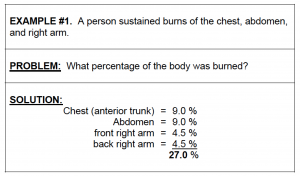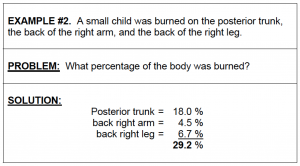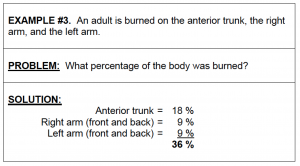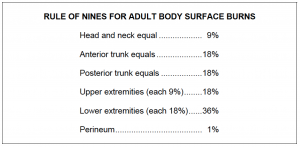The severity of thermal injury depends on the depth and extent of the burn.
These two factors determine not only mortality and initial treatment requirements, but the character of healing, functional result, and the consequences on the body of the injury.
a. The Rule of Nines.
The Rule of Nines is a quick way to calculate the amount of skin surface that has been burned. The name comes from the fact that various regions of the adult anatomy are assigned nine percent of the body surface or multiples of nine. (The Rule of Nines is also used to determine the percent of a child’s skin surface with burns. The percentages assigned to a child’s legs are not nines or multiples of nines.) See figure 3-4 for percentages assigned to an adult’s body and figure 3-5 for percentages assigned to a child’s body.
NOTE: Look at figure 3-4. Notice that although the upper extremities are listed as totaling 18% of the total body surface area with each arm being 9%, the front and back of the arms are further divided. The front of the arm is 4.5%, and the back of the arm is 4.5%. The same is true for the lower extremities. Each leg is 18%, but the leg front is 9%, and the leg back is 9%.
NOTE: See figure 3-5. Just as the body surface of an adult can be further divided, so can the body surface area of the small child. Notice that while each upper extremity equals 9%, the front of the arm is 4.5%, and the back of the arm is 4.5%. Similar subdivisions are made for the lower extremities.
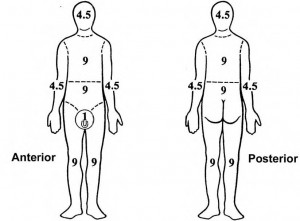
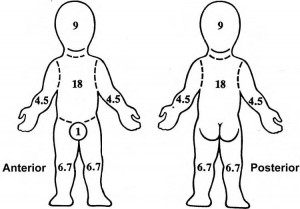
b. Examples.
Examples of calculating the percentage of burn are given in figures 3-6 through 3-8.
